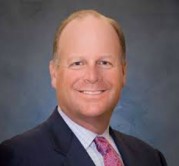A Don’t—And A Do—For Building Your Executive Team

You know the adage, “You can’t teach an old dog new tricks.” In today’s business world, you actually might not want to.
Think about it. How much mileage do you get from annual reviews that focus on what members of your executive team need to improve? How much mileage would you get if you focused the discussion on what they do well already—and how your organization could get that person to do more of what they’re good at?
Often what happens when you discover a team member’s weakness is you try to provide training to correct it. Would it make more sense to say, “This person is really strong at this. Let’s invest to make that person even stronger.”
If you did take this approach, you might need to pull back and look at the overall list of competencies you want represented on your executive team. If Susan is good at “X” and you support her in developing a real specialty in this area, you might hire your next team member in part because of his specialty in the complementary talent “Y.”
If you take the areas where people are strong and passionate, and try to build your leadership team to where other members of the team cover the weaknesses of some of their peers, you’ll end up with a stronger team overall. In this way, you’ll have found someone to cover all the desired competencies without asking people to go against their grain.
The same thing is true for a credit union’s board. If it’s well rounded to the point where you’re able to cover all the competencies you’d like the board to have, you’ve got the setup for a more engaging discussion that will benefit the credit union in the long run. Obviously you need people with some base competencies, but if you can add specific competencies from key people, you may be able to get a blend that really works.
For example, on a board you want a few people who can do financials in their sleep. You also want people who like to think innovatively. Those folks together would have a very interesting discussion about the future of the credit union. If you had just conservative, non-innovative board members, quite possibly you’d get stuck in a rut.
At CUES we’re putting these ideas in action with the key people we have working on different strategies for 2014. In this effort, we’ve tried to pair people who are from different roles who have different thought processes and can represent what they’re good at passionately to, hopefully, bring out the best product.
In doing so we’re following these two rules:
1. Don’t emphasize and train to weaknesses.
2. Do emphasize and train to strengths.
Maybe sometimes you can teach an old dog new tricks. But I’d wager that you’ll get more bang for your training buck—and better strategic discussions—if you help everyone on your executive team and board develop their strengths.
If you’re already doing this in your shop, I’d like to hear how it’s going. Email me at chuck@cues.org.





